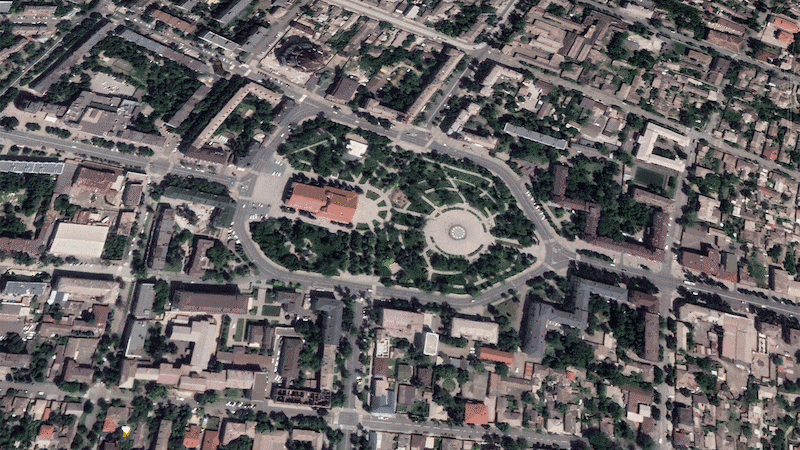It is impossible to sit in company without the suffering, defenceless children of Gaza fading in and out of the conversation. A relentless news cycle churns out shattering images of death and destruction. By now, everyone has picked a side – usually the same side – leaving little to talk about in theory beyond the horror of the Gazans’ desperate existence. Someone will utter a profanity about Joe Biden’s support for Israel. On a rare occasion, someone might tentatively wonder about Hamas: freedom fighters or Islamist terrorists?
While above ground, thousands of Palestinians are dying under merciless Israeli airstrikes, underneath senior Hamas leaders and fighters take shelter in an extraordinary 500km-long maze of sophisticated, spacious tunnels said to be more extensive than the London underground train network.
Many of the tunnel shafts emerge in civilian buildings such as hospitals, mosques and schools, according to Israeli Defence Forces (IDF) sources quoted in the Financial Times. And since Hamas fighters and commanders can continue to operate below ground even in areas said to be under IDF control, the tunnels are therefore the IDF’s priority for destruction.
Then again they would say that, wouldn’t they? Since everything said by the IDF is dismissed as lies and propaganda, there is a certain incredulity among some that Hamas, the acting government of the Gazan people for 16 years, would deliberately position tunnels around buildings housing their own most vulnerable residents. Who do we believe? Does it matter?
Catherine Connolly should ask Jim Gavin what a smear campaign looks like
Threats to Simon Harris are a red alert for Irish society
I find myself in agreement with the architect of Brexit about the flags on Dublin’s streets
Harvey Morrison Sherratt’s parents are a politician’s nightmare: articulate, calm, grieving
[ How Gaza and the Israel-Hamas conflict is stirring tensions in Irish politicsOpens in new window ]
Hamas has denied accusations of mass sexual violence during its October 7th assaults, yet a volunteer who helped collected the remains of victims on October 7th told a UN event on Monday that the body of one woman had “nails and different objects in her female organs”. Another person’s genitals were so mutilated that “we couldn’t identify if it was a man or a woman”, said Simcha Greinman. “Horrific things I saw with my own eye and I felt with my own hands.”
Meanwhile, Israeli fighter jets and helicopters continue to pummel what they call terror targets, “including terror tunnel shafts”. If the mission is to destroy 500km of tunnels underneath Gaza – and by implication the remaining Israeli hostages as well as the homes, hospitals and schools that lie above them – this war has an agonising distance to travel.
In this country, the depth of public and private feeling for Palestinians is visceral. The theory is that we have a particular empathy for a people under occupation. The question is how long such focus or intensity can be sustained in the shifting chaos of geopolitics.
Not long ago, we could see little beyond the agony of Ukraine. A photograph of Mariupol taken only two years ago shows the city glowing like a painting, its beautiful drama theatre bathed by fairy lights and Christmas trees. Three months later, Russia bombed it to rubble killing many reportedly sheltering in the theatre basement.

We know what the months have wrought since. Drawing on conscripts, convicted murderers and rapists to replenish his army, Vladimir Putin has doubled down, displacing more than five million Ukrainians inside the country and forcing six million to seek refuge elsewhere.
The response of Hungary’s Viktor Orbán – EU member and Putin buddy – is threats to veto an EU €50 billion aid package for Ukraine and the opening of EU accession talks. Orbán is leveraging a country’s very existence against his demands for the unfreezing of EU funds which are conditional on reforms required to drag his own government into line with EU norms. In the US this week the White House announced that “it is out of money and nearly out of time” to provide more weapons and support to Ukraine unless Congress acts to approve a package worth tens of billions. A failure to send the aid would “kneecap” the country, it said.
This is what Putin has been waiting for. War fatigue is one of the Kremlin’s main propaganda narratives. A world distracted by a burning Palestine suits his purpose. Things are going his way.
[ The convicts sustaining Putin’s invasion of UkraineOpens in new window ]
Mikhail Zygar, a Russian-born writer in exile, reports that while 20 months ago Putin’s regime was perceived to be on the brink of collapse in the eyes of many high-ranking Russians, the mood has changed dramatically. Billions have been returned to Russia by oligarchs, the economy has stabilised, defying western sanctions, restaurants are packed, construction and industry are booming, Zygar writes in the Washington Post.
Meanwhile, Russia’s rapidly intensifying relationship with Iran has maintained drone supplies crucial to the prolonging of the war against Ukraine. And Hamas is never far away. Less than two weeks after the October 7th atrocity, the Kremlin hosted some high-level Hamas members, after which the group announced it was looking for eight hostages in Gaza that Russia had asked to be released. When Hamas’s Thai hostages were released following a deal between the Thai government and Iran, it was so unremarkable to see Iran wielding such influence it hardly warranted a mention.
Yet it’s just more than a year since Mahsa Amini, a 22-year-old Iranian Kurd, was arrested for wearing the hijab improperly and died in Iranian police custody, and girls and women risked jail, rape and death to frighten the same old mullahs and hardliners by tossing their hijabs into fires while chanting “woman, life, liberty”?
The Taliban hasn’t gone away. Young Afghan woman are living in fear of their lives.
Many will argue that only one battle can be fought at a time. The Palestinian people need all the support that comes their way. At the same time it serves no one’s purpose to take an eye off the bigger picture – if only for a clue to what happens next.












